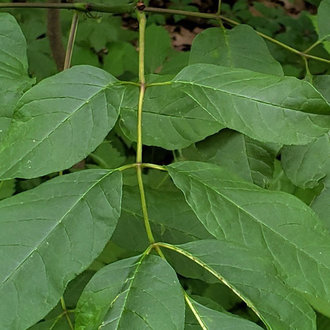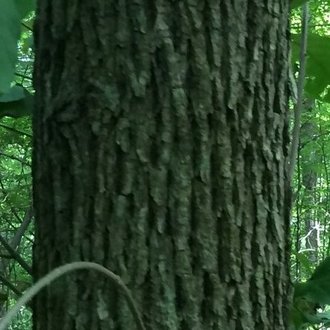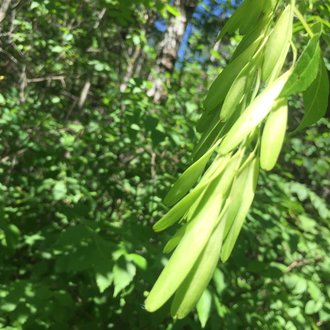White Ash vs Black Ash
Although ashes tend to be hard to identify, white ash and black ash are relatively easily distinguished. Both species are more commonly confused with green ash, which has more intermediate characteristics between these species in many respects.
White Ash (Fraxinus americana) | Black Ash (Fraxinus nigra) |
A tree species native to eastern North America, found on mesic sites in early to mid stages of forest succession. | A tree native to eastern North America, with a northerly distribution; often found in climax communities on wet, poorly-drained sites. |
Leaflets attached to central leaf stalk by a long petiole or stem. Photo © aarongunnar, CC BY 4.0. | Leaflets sessile, attached directly to the leaf's central stalk with no petiole or stem. Photo © botany08, CC BY 4.0. |
Bark of mature trees consists of long, narrow vertical ridges and valleys, firm to the touch. Photo © Charlie Hohn, CC BY 4.0. | Bark of mature trees scaly, flaking off, with more horizontal breaks. Photo © Norris Muth, CC BY 4.0. |
Seed plump and round, sticks up far above thin wings of samaras, easily visible in photographs. Photo © Randy A Nonenmacher, CC BY-SA 4.0. | Seed very flat, does not stick up appreciably beyond wings of samaras, often not easily visible in photographs. Photo © Mary Krieger, CC BY 4.0. |
Leaf scars U-shaped. Photo © Charlie Hohn, CC BY 4.0. | Leaf scars more straight across or only weakly notched at top. Photo © Charlie Hohn, CC BY 4.0. |
References & External Resources
These short lists show only links helpful for ID. For a complete list of references and resources also covering other aspects of ecology, visit the links section of the full article on each plant, which is the first entry here.










